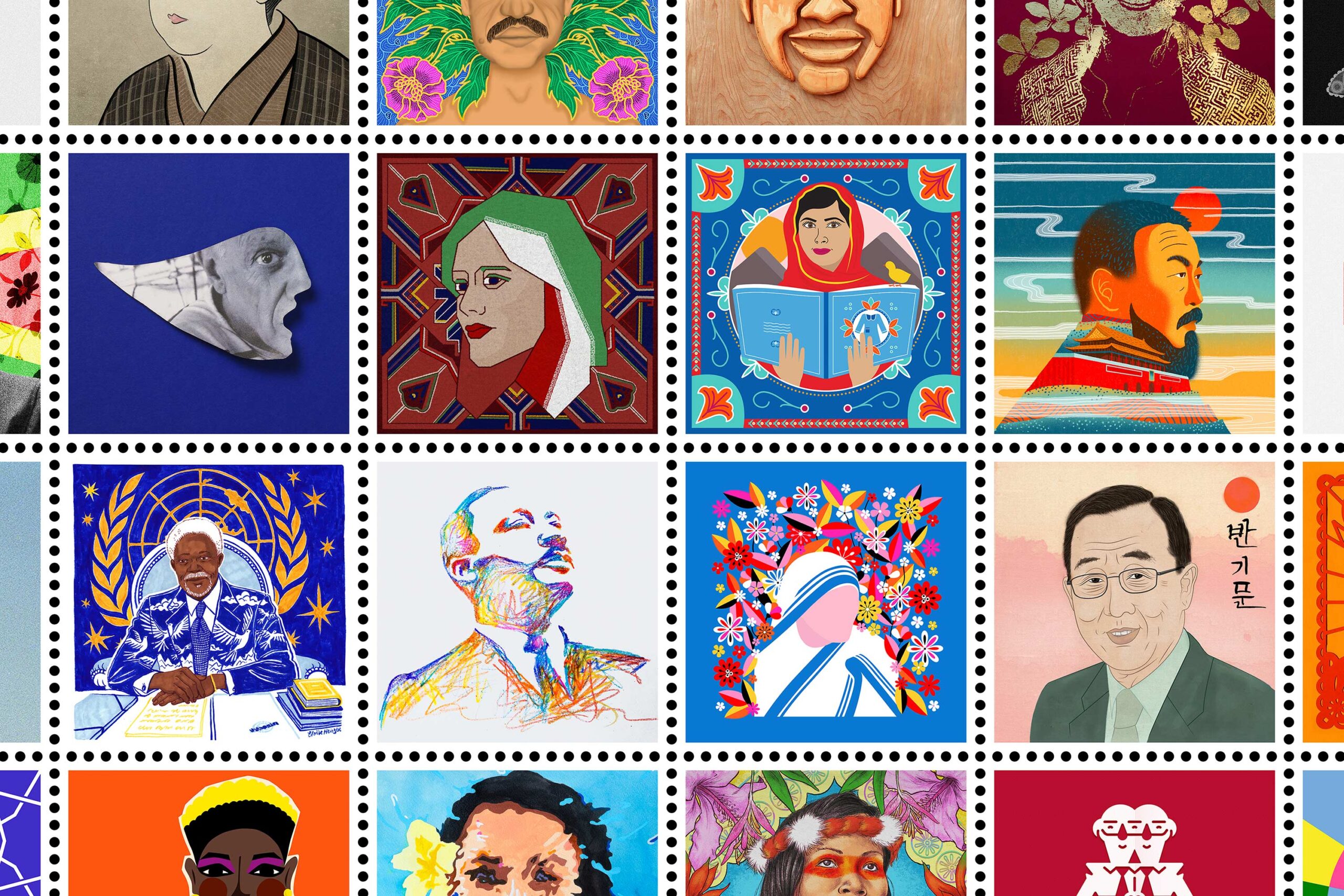This article was originally published in the November edition of The Clarion.
We live in dark times, and it can seem like the idea of peace is drifting further and further away. But thanks to a design studio, the world has an example of what they can do to promote peace no matter how bad things are about to become.
Unveiled at an exhibition on Sep. 4 in Dayton’s International Peace Museum, Peace Post is design studio Selman’s effort to immortalize the work of peace advocates around the world. It features nearly 200 portraits, each from a different country, in an inspired project that included the work of dozens of artists over an eight-year period.
Project organizer and studio founder Johnny Selman is no stranger to massive projects. But where Peace Post dwarfed some of his other endeavors in scale, past experience helped the New Yorker match it with passion. Thank God for it too: Peace Post’s message and themes are more needed now than ever before.
“I have three daughters that are under eleven years old and my eldest woke up and started crying when she found out,” Selman told me the day the 2024 Election results were officially announced.
“Now’s the time to prepare for a lot of uphill battles for the next couple years,” Chris Schroeder, Accounts Manager at the studio, added.
And if those battles are to be won society will need more people like them. The pair go back to their undergrad years at JMU. Selman, a Fine Art major, would continue his education at the Academy of Art Institute in San Francisco. There, a thesis project would put him on the map.
“The project was called BBCx365, and I was going to design a poster every day for a year based on current global events. It got a good amount of global press and created a platform for me to work in New York with the New York Times, Google’s Creative Lab, and brand consultancy. It set the stage for me to make my own company,” Selman said.
The studio was founded 12 years ago, and Schroeder was soon brought in. One of the first projects they planned was Peace Post, initially, as a means for their designers to do meaningful work while also supporting their clients.
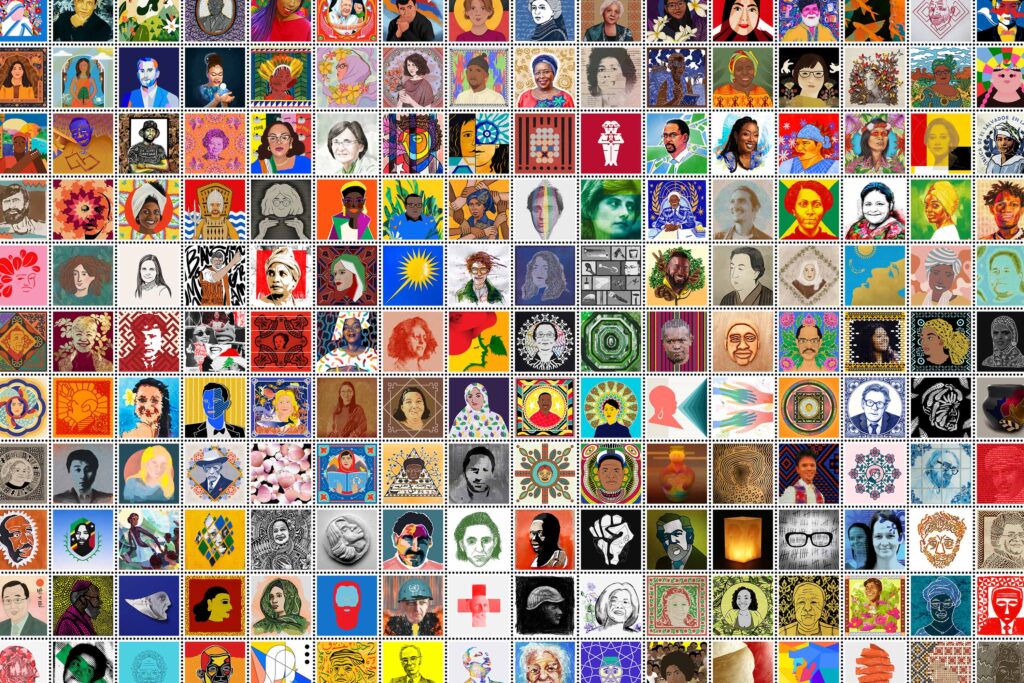
Nearly 200 countries are featured in the Peace Post exhibit, starting with Afghanistan and ending with Zimbabwe. Photo Credit: Selman
“The BBC project opened my eyes to a lot of what was going on in the world. It forces you to develop a certain level of empathy and to learn to work quickly and smartly. I was trying to think how to do something like that for an entire studio. We started with a proof of concept, and it remained largely a studio project for a while,” Selman stated.
But it would take a lot more than a concept to get the project off the ground. Its scale would soon prove to be much larger than they expected.
“It came down to how is it going to work exactly, who qualifies to be one of the advocates, how do we decide what countries are included. We wanted to make it as holistic as possible and represent as many areas and nations as we could,” Schroeder added.
To make the process as smooth as possible they settled on following the UN charter of nations. They then had to find 198 advocates to represent each independent state, no small feat as it would turn out.
“As a team we had to investigate what made a good advocate. We started with the big peace prizes such as the Gandhi and Nobel. Soon, we learned that a lot of smaller nations weren’t being represented, a lot of good work was being done under the radar. We had to look things up, find local coverage on peace or environmental advocates from those areas. What was nice about that is we ended up with a nice mixture of people from the past and present,” Schroeder said.
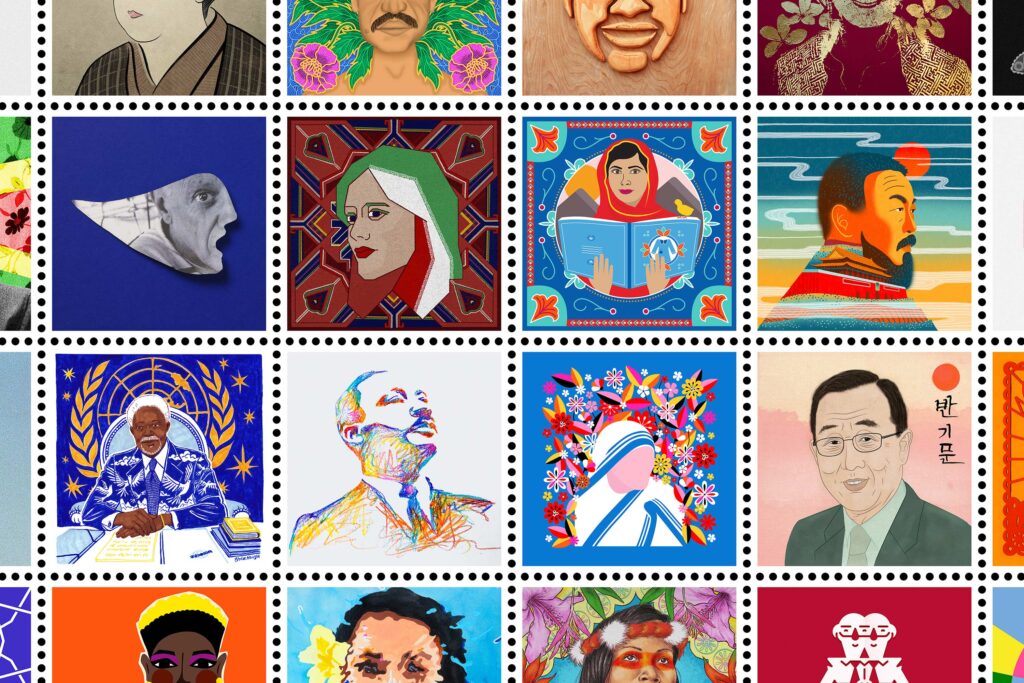
Peace Post celebrates modern and historic figures from MLK JR and Mother Theresa to Malala Yousufzai. Photo Credit: Selman
A quick glance through the vibrant artwork of their team is illustrative. Some of the advocates featured are easy to recognize like Mother Theresa and Ai Weiwei. But others will be new for many of us, an intriguing way to encourage viewers to look into their incredible stories. As impressive was the amount of work that went into each image.
“Originally, we did the art in-house, we had about a dozen designers here. We would do research on the country, their artistic styles, advocacy background, and then deliver it to the artist. That let them find their own inspiration from the country and the advocate’s story,” Selman explained.
They soon began thinking of dream collaborations. On reaching out to their artists of choice, Selman and his team were stunned by how receptive they were.
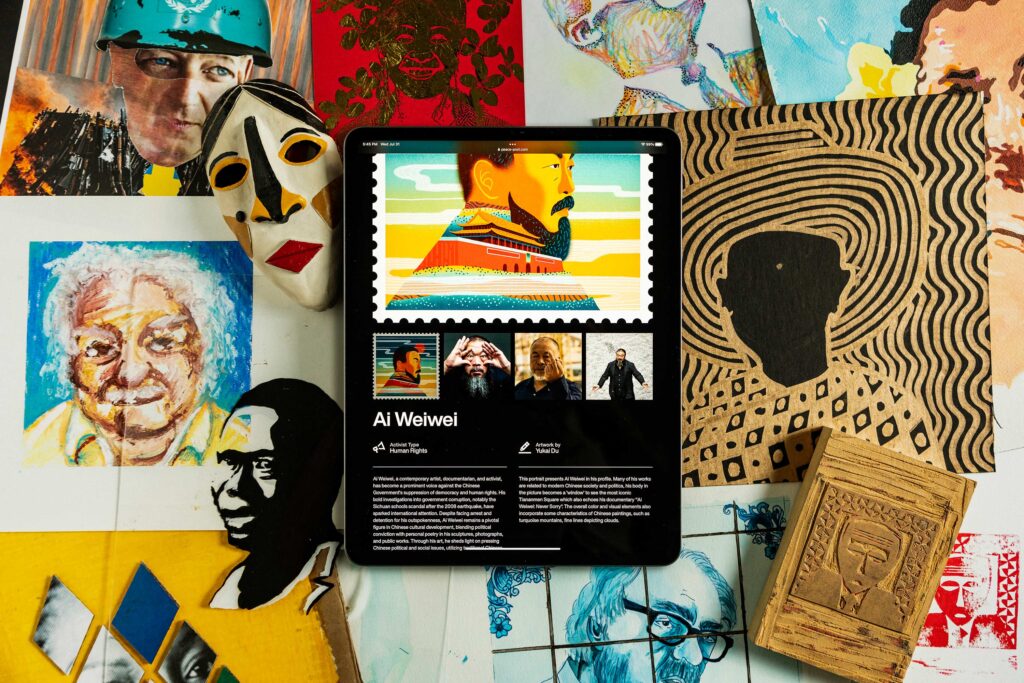
Peace Post exhibitions and a dedicated website explore the contributions of the figures they commemorate. Photo Credit: Selman
“Near the halfway point we began looking for more outside illustrators, specifically ones from the countries that the advocates were from. Initially, we as designers in Brooklyn were learning about other countries, their artistic styles and creating art inspired by that. That’s one way to do it. But the other way is to hire an artist from that country, steeped in that culture, and then have them make something truly authentic,” Selman added.
They started out with a plan to make one a week and four-year timeline to completion. As Schroeder explained, it would instead take them eight years due to a need to maintain work balance. He admits, however, that it was extra time the team used wisely. The results alone make every year of work worth it.
“Talking about peace, supporting it, and championing peace makers is an undeniably positive thing. Especially today and I think that is one thing that resonates with people. It’s awe-inspiring to see in its totality what nearly 200 portraits of peace advocates look like. Each of them has honest, sometimes raw material incorporated into their portrait,” Selman said.
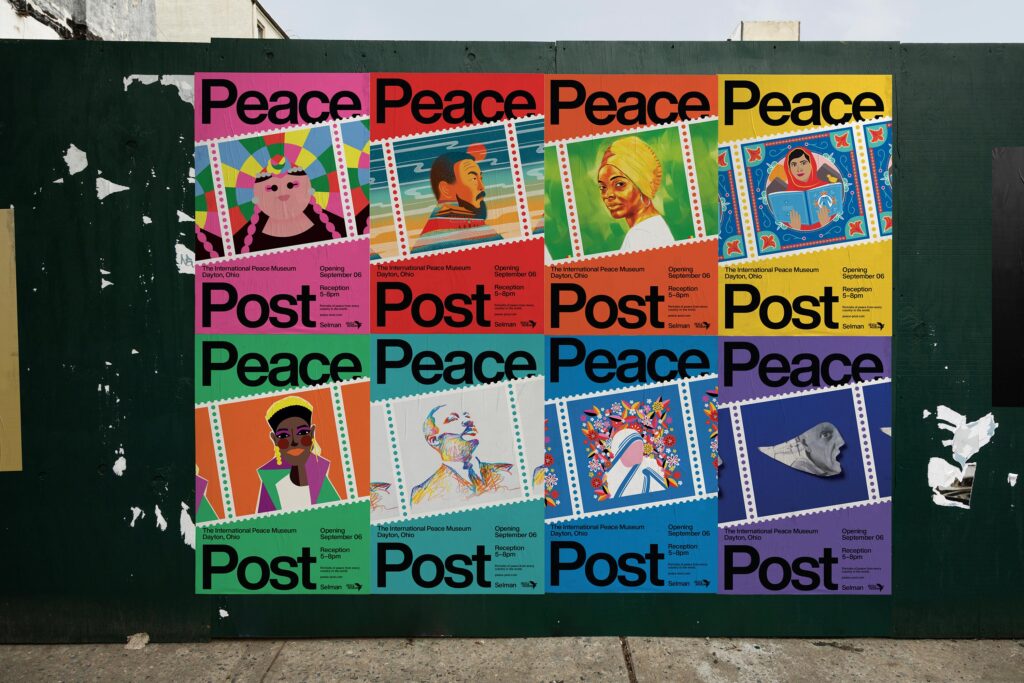
Each portrait includes a fresh and unique approach by their respective artists. Summaries of the artistic process behind each image can be read on the Peace Post website. Photo Credit: Selman
Selman has seen firsthand the power of Peace Post to inspire. He’s watched his daughter share the project with others and knows just how important that enthusiasm will be in the years ahead.
That’s the thing. It inspires people that are 11 years old, and they get it. That’s what keeps me optimistic today of all days,” Selman said.
Creative outlets like Peace Post, Schroeder says, will also be key. The service they do in keeping democracies alive are vital.
“Art, media, and culture are so important because they are conversation points. They are doors into different perspectives. It’s important to keep doing those things, that they are not censored so that people can be exposed to new ideas, perspectives, and individuals especially in the case of marginalized groups,” said Schroeder.
Peace Post is a great example of the kind of work we will have to do in the coming months, years, maybe even decades. The drive and passion Selman Studio has shown as well as their professionalism in keeping our interview despite our circumstances, should be polestars for the rest of us.
“The scale of the project was huge but its inspiring to realize that it barely scratched the surface of the people out there doing amazing things, fighting for rights on all fronts. That’s something we can learn from this: go out, support people, or be the person if you have to. We’re all in for a lot of fights here. It may seem ironic to talk about peace that way, but we are talking about people fighting for the rights that will allow them to live in peace,” Schroeder said.
Ismael David Mujahid, Executive Editor


